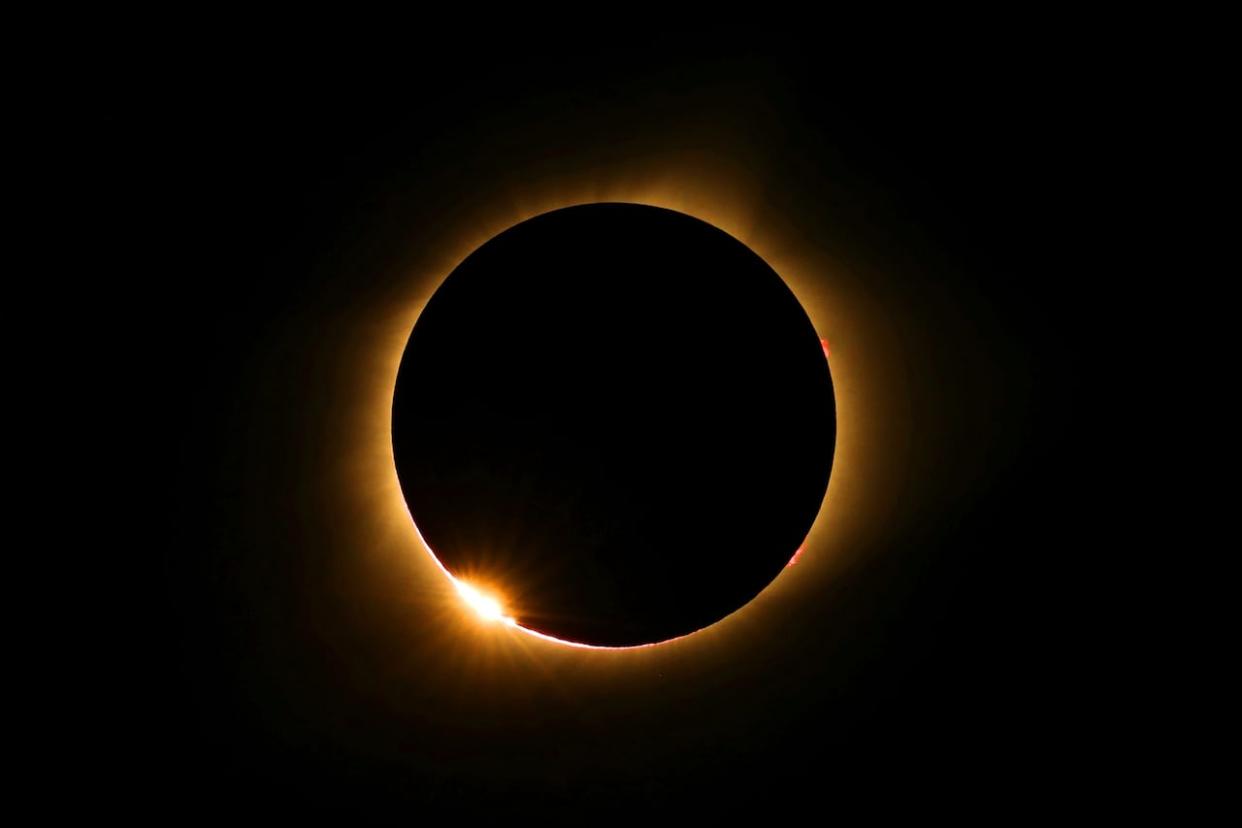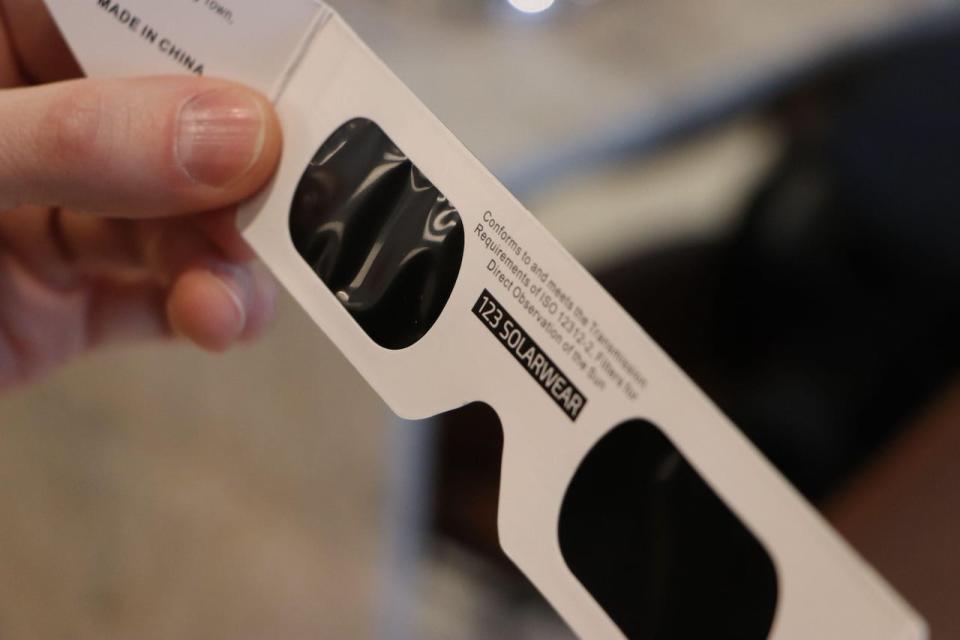There's an eclipse today. Here's what you might be able to see in the N.W.T.

A total solar eclipse will happen today, but it will look different depending on where you live.
The eclipse is a rare celestial event where the moon passes between the sun and Earth, entirely blocking out the sun for anybody in the path of totality. In Canada, that stretches across parts of Ontario, Quebec and the Maritimes.
For people living in the Northwest Territories, it will appear as a partial eclipse, where the sun is covered by about 11 per cent. It may be visible sometime between noon and 2 p.m. MT, depending on where you are.
"It will look like someone has taken a little bite out of the sun," said Nicole Mortillaro, a senior science reporter with CBC.
Yellowknifer Stephen Bedingfield, who has already seen multiple eclipses, went down to Mexico to see the real deal, from within the path of totality.
"It's startling," he said. "It's almost an ethereal experience ... the moon slowly creeps in front of the sun, blocking the light of the sun, for a few precious minutes."
When that happens, a "360-degree sunset" takes place, he said.
"That's the hot tamale, right? The central part of the eclipse."

People should wear eclipse glasses to view Monday's events. (Rachel Watts/CBC)
Bedingfield said it's a moving thing to witness.
"I realize in the grand scheme of things, my insignificance," Bedingfield said. "But I also feel connected. It's like experiencing the universe, in a sense."
Today's event doesn't happen often. The last total eclipse happened in 2017, and there won't be another until 2044.
How long it lasts also depends where you are. For Bedingfield, in Mexico, it will last over four minutes.
For others, it might just be a few seconds, to a full minute. In Canada, the longest eclipse will be seen in Niagara Falls, Ont., where it will last around three minutes and 38 seconds.
To view it safely, people should use eclipse glasses, and should definitely not look directly at the eclipse. Mortillaro suggests looking up how to make homemade glasses with cardboard, such a cereal box.
Bedingfield has been chasing eclipses for years. He and his wife have travelled to Indonesia, Australia, Libya and elsewhere to see them.
"If you like them a lot, you may have to travel the world to see them," he said.
"It's actually an experience. It's not just something you see."


